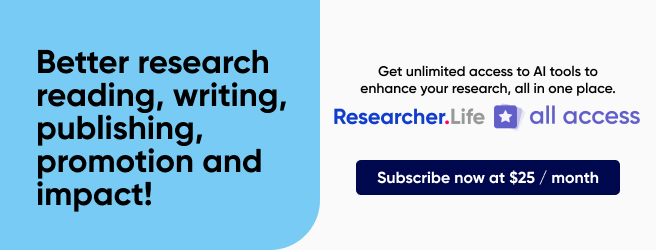How to prepare a provisional patent application

- To get a patent, you need to have your idea or device evaluated, a claim of originality, and filing of an application for patent.
- Filing a provisional patent application usually is the best way of protecting a device or process.
- Two phases are generally required for all patents: evaluation and writing.
- Writing a patent application requires a subject matter expert, excellent technical writing skills, and preferably (but not required) an attorney or patent agent.
The previous article provided an overview of the patenting process, ethics, likelihood of success, and the complexities of filing patent applications under the Patent Cooperation Treaty (PCT). It is more accurate to refer to the process as preparing an application, rather than protecting an invention and deriving benefits from it.
An idea or a set of research results do not become an invention until a patent is granted, and it is granted only when novelty has been established by a patent search. Patent applications are divided into two phases: evaluation, seeing if the idea or device is eligible for patenting, and protection, the actual filing a claim of originality. Because of high costs and other restraints involved in filing a regular patent application, a provisional application for patent is preferred. This article, therefore, centers on the provisional application for patent.
WIPO
"WIPO" – this may sound like a new brand of cleaning cloth. In a sense, it is clearing the air of confusion often found in discussions about patents. The World Intellectual Property Organization (WIPO), a United Nations Organization, was established "to encourage creative activity, to promote the protection of intellectual property throughout the world." It administers The Patent Cooperation Treaty (PCT), and sets forth basic world standards for patent preparation and filing. While it is a good idea to read this 81-page document, Chapters I through IV in particular serve as an excellent guide to preparing initial patent applications. Once you learn how PCT requirements, it is almost perfunctory to apply them to other countries, because once the application is completed, all PCT signatories accept it.
Types of patent applications
While we have covered this in the previous article, here’s a quick review. All patent applications are written claims of discovering something new on a specific date. They are requests for an authority to recognize that the filer did discover something on a certain date. All applications warn others not to infringe on your idea or device; this is what “patent” means. WIPO formally defined a patent as “an exclusive right granted for an invention, which is a product or a process that provides, in general, a new way of doing something, or offers a new technical solution to a problem.”
As you may already know by now, the operative word in seeking protection for your idea is "application" as there is no provisional patent. However, all applications provide you with a "patent pending" status, meaning you are telling the world you have filed a claim of originality and may be entitled to patent rights.
These are the types of patent applications available:
- Provisional application for patent (also known as a provisional patent application, or PPA) or in common parlance - incomplete application for patent
- An international application filed under the Patent Cooperation Treaty (PCT)
- The non-provisional application for patent (referred to here as "NPAP ").
Each patent application serves a specific purpose and differs when it comes to fees, application categories, etc. The PPA is preferred to protect a device or research because of the finality of a non-provisional patent application, maintenance obligations, complexity, and cost. Speaking of costs, filing fees vary worldwide, as in the US and Canada discounting for individuals. The PCT also has a discounted fee structure, described in the fee table footnotes. Note that here is no PPA for a design (logo, artwork, etc.).
In simplified words, a successfully filed International Application "has the effect of a national patent application (and certain regional patent applications) in or for all PCT Contracting States."
Because the PCT does not have patent application categories, we'll be discussing only the general provisions of patent applications. Each country has its own categories of patents, such as the US design and plant patents; Russia's topographies of integrated circuits, computer programs, and "secrets of production"; and China's utility and design patents.
Finally, non-provisional patent applications must be filed individually in each country. There is no single patent good worldwide; WIPO does not issue any patents.
To make it easy, the following table summarizes the relationships between the non-provisional patent application, the provisional application for patent (Provisional Patent Application), and a claim filed under the PCT.
PPA, PCT, NPAP
|
|
NPAP |
PPA* (simplest) |
PCT |
|
Purpose |
Claim date of originality |
Claim date of originality Further develop your idea through successive PPAs Determine reception of your idea |
Claim date of originality Determine reception of your idea Same status as PPA |
|
Expiration |
Varies with country, but generally about two decades |
One year – can be converted to non-provisional or refiled (losing previous priority date) as if previous PPA never existed |
30 months (Art. 22, PCT) RRe-filing can be complicated. |
|
Costs |
Very high – thousands of dollars - filing, maintenance, other fees, attorney/agent fees |
Low – about $70-$150 filing fee |
High – about $2500 filing fee |
|
Two part evaluation required – general and patent search |
Yes |
Yes |
Yes (fee includes patent search) |
|
Writing of application |
Technical writer Subject matter expert Attorney highly recommended |
Technical writer Subject matter expert Attorney not needed but recommended for complicated PPAs, PPAs in final form, and converting PPAs |
Technical writer Subject matter expert Attorney highly recommended |
|
Publication |
Yes, unless otherwise requested |
No |
Yes |
|
Claims and Abstract required |
Yes |
No |
Yes |
|
Examination on merit |
Yes |
No |
Yes |
|
Preference |
Only if your idea/device is in final form and well received |
If idea/device is not fully developed, "proven", or well received |
Only if your idea/device is in final form and well received |
*Only in a few countries
Patent application stage 1 - Evaluations
All patent applications are done in two phases: evaluation and writing. So let us begin with the evaluation process.
The evaluation process of a patent has two parts: overall assessment and patent search (which assesses novelty). While the first is easy for researchers to handle by themselves, the second requires specialist assistance. A tip here is to always check your country's patent requirements before starting the process.
Overall assessment
As per WIPO guidelines, a patent is granted for "a product or a process that generally provides a new way of doing something, or offers a new technical solution to a problem." As for the general evaluation you have to have a "[...] new and useful process, machine, manufacture, or composition of matter, or any new and useful improvement thereof [...]".
Things that are ineligible for patents are:
- Laws of nature
- Physical phenomena
- Abstract ideas
- Literary, dramatic, musical, and artistic works (these can be copyright protected)
- Inventions which are:
Not useful (such as perpetual motion machines); or
Offensive to public morality (USPTO)
Ineligible for patents are "inventions useful solely in the utilization of special nuclear material or atomic energy in an atomic weapon." These overall assessments are more common sense or resolved by research findings. For example, perpetual motion machines, weapons of mass destruction, and do-nothing machines cannot be patented. In any case, the patent examiner makes the final decision on what can or cannot be patented. The same standards are applied by WIPO.
These guidelines are commonly followed in worldwide.
Novelty search
All patent applications require novelty searches. "Novelty" means newness: what you are trying to patent should not exist as prior art, or artisanship, in the form of an actual invention/innovation, displayed product, or even a journal article. Therefore, patent examiners search international databases for prior art, issued patents, public displays, and even articles (trade, professional, or casual) and advertisements.
There also is the "obviousness" criterion, which is quite controversial. Chapter II, Article 33 (2) of the PCT says:
a claimed invention shall be considered to involve an inventive step if, having regard to the prior art as defined in the Regulations, it is not, at the prescribed relevant date, obvious to a person skilled in the art
Critics may say that the examiners may be able to see the "obvious" (owing to their special training) but not the average person who is merely "skilled in the art." Case law abounds worldwide on the subject, and surely we will not attempt to resolve the problem in this post.
Aside from the general considerations about novelty and “obviousness” is the search method. Unless you are skilled at conducting patent searches and have access to appropriate databases, you very likely will not be all that effective in your search. Keyword and phrase searches are not enough. Moreover, each search location or utility has its own learning curve and limitations.
Various countries have their own search utilities, each with its set of complexities. So, if you are short on time and have the resources, have a professional patent searcher check for novelty. A patent search can be as low as $300 but can go up to several thousand dollars if an in-depth extensive search is involved. A very comprehensive but expensive way of conducting a search is to spend the several thousands of dollars for an application to WIPO.
To help overcome the differences in search methods, between 24 and 25 August 2019 the European Patent Office (EPO) and the U.S. Patent and Trademark Office started the Cooperative Patent Classification System (CPC) "to develop a common, internationally compatible classification system for technical documents, in particular patent publications, which will be used by both offices in the patent granting process". Ultimately CPC will be compatible with the "World Intellectual Property Organization (WIPO) classification standards and the International Patent Classification (IPC) structure."
The WIPO system is based on an eight part division of technology with 70,000 subdivisions. Each area is designated by language-independent symbols to classify models and utility patents.
If the patent search results for novelty give you a "fair" to "excellent" rating, consider filing the PPA. Here, you'll want to assemble your team, ideally consisting of you (the subject matter expert), a technical writer, and an attorney/agent.
Patent application stage 2 - Writing
Given the strong recommendation for hiring a patent attorney or getting agent assistance in preparing and filing a non-provisional application for patent, as well as an international application under the PCT, we will be covering only the PPA, the only application that you really have much leeway with, with respect to informality.
The PPA includes the specification and drawings.
Specification refers to a detailed description that reduces the idea, process, device, etc. to practice: what it is, how you do it, how it operates, etc. A person totally unfamiliar with the idea or invention should be able to replicate and use it relying only on the PPA. Here you explain what you do; do what you say in a simple, complete, logical, and clear manner.
Drawings can be sketches, photos, or blueprints, as long as they accurately and completely represent the idea/device. For a non-provisional patent application as well as for a PCT application, these usually have to be more formal.
The PPA documents an idea's development into practice. A single PPA can capture its final stages, or there can be a series of PPAs "accumulating information," the final PPA resembling a non-provisional patent application.
There is no one template but searching under "provisional patent application template" will produce many suggestions. Go with the ones used by lawyers. Perhaps it is even better to search for actual granted patents and follow those formats. PPAs, be it national or PCT-compliant, do need to contain the following:
- Contact information
- Description of the device or process (often called "specification" – how it is constructed and operates
- Claims and Abstract (PCT only)
To be successful, a PPA must always describe the idea as completely as possible, the technical term being "full disclosure". It cannot be emphasized enough about what was said above about the specification. Say what you do, and when other read it, they can do what you say. The gold standard is that anyone reasonably knowledgeable in your area should be able replicate what you describe using ONLY your description. With respect to the drawings, a picture really is worth a thousand words, and the more accurate and complete your drawings (or other images), the more compete is the description. In addition an attorney preparing a non-provisional application for patent should be able to use just your documents to complete the application. Aside from this, the rest is just filling out of forms. However, if PPAs are converted into non-provisional applications for patent, it only makes sense to have the format resemble the latter as much as possible.
Technical writer
If you are planning to handle the technical aspects of your application yourself, you need to check whether you have:
- successfully written at least one technical manual that currently is in used by many people (user guide, software manual, installation manual, etc.)
- graduated from a college or university, majoring in the area in which your invention is found
Alternatively, you can take these technical writing tests to find out whether you are prepared to write your own PPA:
- https://www2.tesu.edu/tecep_desc/ENG-202.pdf?
- http://www.klariti.com/Technical-Writing-Tests/Klariti%20Technical%20Writing%20Tests.pdf
There are numerous tests to assess your technical writing ability. While there is no single widely-used test to find out if you can write a PPA, these do provide an indication as to whether you’re equipped to handle the task.
Preparing and reviewing patents
Either an attorney or patent agent is competent to prepare or review your PPA. They may be a costly asset, so if resources are limited, bring her/him only in the final part, i.e., reviewing your PPA before submitting it. Patent agents are generally less costly. The more complicated a PPA, the more you need help. Be mindful of attempts by the attorney/agent to sell you on the need to have the PPA be exactly like the non-provisional patent application. This may be ideal but not necessary. Review the PPA requirements (say what you do; do what you say) and assert yourself. PCT applications, because of the need to word claims and abstract properly, do call for legal advice.
In the event you omit the attorney, your PPA preparation may not be adequate for conversion into a non-provisional patent application. If there are problems with the existing PPA, use its content to build a non-provisional patent application. Yes, it is possible you will need to rely on the PPA for enforcing your claims; and if you think this is a real possibility, consult a patent attorney or agent.
Other important considerations
Apart from the guidelines and tips that I’ve shared on writing and filing a patent application, here are some additional tips you should keep in mind in the order you will probably encounter them. The first two – notebooks and prototyping – occur during your initial stages of development, though prototyping may be postponed until later.
Inventor's workbook
Should a creator maintain an invention notebook/workbook? In many cases, the problem already is resolved by a conscientious researcher, especially one in a scientific setting. Laboratory reports, diagrams of devices, correspondence – anything documenting the development of the idea, process, or device – qualify. Overall, while an invention notebook is not a legal document in itself, it does help substantiate a patent application. It describes in detail an idea's origin and how it has been reduced to practice. Think of it as a diary supporting claims in a legal petition, i.e., evidence.
Prototyping
"How do I prototype my invention; do I even need to do so?" you may ask. PPAs do not require a prototype, but to convince others that your idea can be reduced to practice, it often will be necessary to create working models. Chances are, in a laboratory or another scientific setting, such models will have already been done. It is a judgement call whether to prototype depending upon your audience's questions. Again, researching "prototype companies" will be your guide.
Team members
Organize your team appropriately – you, a subject matter expert (if needed), a technical writer, and an attorney (if you have resources). The most important part here is to ensure your having any team members or anyone else learning of your idea/device to sign an attorney-reviewed non-disclosure/non-compete (ND/NC) agreement that is notarized.
Online filing
Surprisingly, government websites may not be secure, as in the USPTO unregistered e-filers website. Notice the orange-colored triangle next to the gray padlock in the Firefox browser. In Chrome, the address is in gray and there is no green padlock. Alarmingly, the situation has been this way over a year, and the USPTO states plainly that "PKI authentication for EFS-Web and Private PAIR is permanently disabled." This insecure e-filers website still is "open for business", the lack of encryption potentially allowing rogues to intercept communications between the filer and the user. Details may be found in "The gaping security hole in a US Government website."
Inventor’s societies, clubs, and other organizations
How about inventors' clubs, invention societies, clubs, and other organizations? Never disclose the details of your idea, save under a non-disclosure/non-compete agreement. When it comes to the people who provide generic support and direct you to resources, such as technical writers, subject matter experts, and lawyers/agents, be discrete and observant.
Expectations of monetary gain
It is common to ask "Can I make money from my invention?" The technical part of filing intellectual property documents is comparatively easy. Marketing by far is the most complex phase of your invention activities and is beyond the scope of this article. It is a specialized area and arguably more complex than lawyering. Too, the complexity and nature of the invention will often determine how it is presented to the public. This is one major reason "97% of persons holding patents are not successful getting them off the ground."
Promoting and ultimately marketing the invention is considerably harder, and people often seek assistance. Be cautious about invention "help" companies, though. Often, fraudulent companies will make outrageous claims such as guaranteeing you a patent, the qualifying word "design" being left out. Design patents often are simply granted, but the desired utility patent usually is not. Often, these companies charge a very high sum for little or no return. One of the worst was World Patent Marketing (WPM) which deceived several people. Matthew Whitaker, acting United States Attorney General from 2018 to 2019, was an adviser. The highest prosecutor in the land is no paradigm of legal virtue. Recall Richard Nixon's Attorney General John Mitchell serving three years in Federal Prison for his Watergate antics.
Afterword
This article has been limited to the basics of applying for PPA, and application procedures may vary from country to country, but it is safe to say that following the PCT route will land you in right territory about their requirements.
CAVEAT: None of the foregoing should be taken as legal advice. For that, consult a patent agent or attorney.
Comments
You're looking to give wings to your academic career and publication journey. We like that!
Why don't we give you complete access! Create a free account and get unlimited access to all resources & a vibrant researcher community.

Subscribe to Journal Submission & Peer Review













